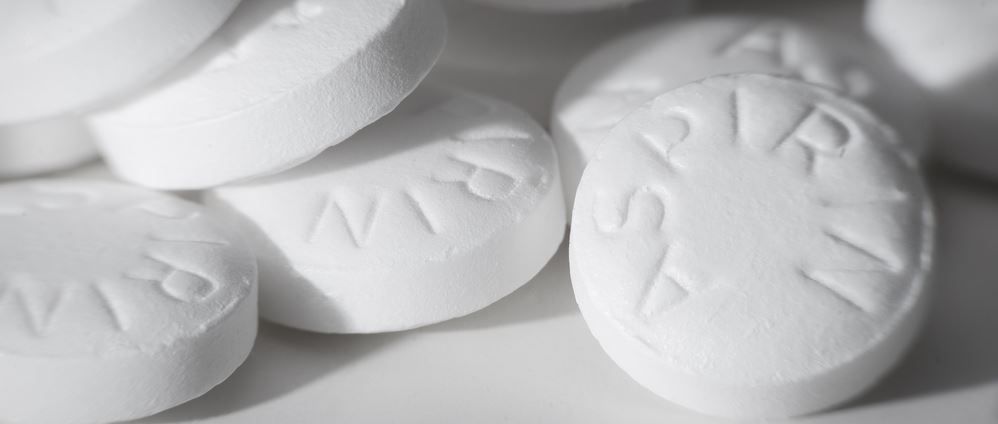Grade C Recommendation
Grade D Recommendation
USPSTF states low-dose aspirin should be considered for CVD prevention on a case-by-case basis in adults aged 40-59 yrs with a 10% or greater 10-year CVD risk.

In its final recommendation on initiating aspirin for primary prevention of cardiovascular disease (CVD) or stroke the US Preventive Services Task Force (USPSTF) issued a grade C recommendation for use of low-dose aspirin in adults aged 40-59 years who have a ≥10% 10-year CVD risk. Evidence for a net benefit of the therapy in this age group is small, the recommendation states, and the decision to initiate therapy should be individualized. Persons who are not at increased risk for bleeding and who are willing to take the aspirin daily are more likely to benefit.
In adults aged ≥60 years, the final recommendation is against initiation of low-dose aspirin for primary CVD prevention, to which the group assigned a grade D.
“Based on current evidence, the Task Force recommends against people 60 and older starting to take aspirin to prevent a first heart attack or stroke,” said task force vice chair Michael Barry, MD, in a statement from the USPSTF. “Because the chance of internal bleeding increases with age, the potential harms of aspirin use cancel out the benefits in this age group.” Likewise, Wong adds, in the younger group the decision to initiate aspirin therapy should be made in consultation with the health care professional because daily aspirin use “does come with possible serious harms.”
These final recommendations largely reiterate the USPSTF draft statement released for public comment in October 2021. They update and diverge, however, from the 2016 task force recommendations which supported daily low-dose aspirin for adults aged 50-59 years with a ≥10% 10-year CVD risk, without increased risk for bleeding, have life expectancy of at least 10 years and are willing to continue daily aspirin use for at least 10 years. The 2016 guidance recommended that a decision to begin prophylactic aspirin be individualized for adults aged 60-69 years with similar CVD risk. At the time, the evidence was insufficient to assess the harms/benefits of initiating aspirin in adults aged <50 years or ≥70 years.
Review and evidence
To research potential updates for the 2022 recommendations USPSTF commissioned a systematic review to evaluate new evidence (through January 2021) for the effectiveness of aspirin to reduce CVD event risk (MI, stroke) and CV- and all-cause mortality in persons without a history of CVD. The analysis also evaluated the risk of aspirin-associated bleeding in primary prevention populations.
The 11 randomized controlled trials (RCTs) identified that provided results on the efficacy of aspirin to prevent CVD morbidity and mortality included a total of 134 470 individuals; men and women were evenly distributed across RCTs, and mean age ranged from 53 to 74 years. The majority of trials used low-dose aspirin (≤100 mg/day).
The Task Force found that aspirin use for primary prevention of CVD was associated with a small but significant decrease in major CV events (OR = 0.9; 95% CI, 0.85-0.95), but did not significantly reduce CV mortality or all-cause mortality.
Safety analysis found that low-dose aspirin significantly increased total major bleeding (OR, 1.44; 95% CI 1.32-1.57). USPSTF authors emphasize that absolute risk of bleeding, and thus the magnitude of harm, increases with age and more so in adults aged ≥60 years.
A sensitivity analysis of low-dose aspirin only (≤100 mg/day) found similar reductions in major CV events, MI, and stroke vs the main analyses of all aspirin does. All-cause and CVD mortality remained statistically nonsignificant in the low-dose sensitivity analysis.
In an editorial accompanying the publication in JAMA, Jeffrey S. Berger, MD, MS, director, Center for the Prevention of Cardiovascular Disease, NYU Langone Health, points out that other major clinical guidelines on primary CVD prevention are consistent with the USPSTF approach in their recommendation for a “tailored decision making process” between patient and clinician based on the potential benefits vs risk of aspirin therapyfor that patient. Likewise, recommendations for use of low-dose aspirin in primary CVD prevention from the American College of Cardiology/American Heart Association and the European Society of Cardiology use similar cautionary qualifications regarding youngest age at which to consider aspirin for primary CVD prevention (≥40 years) and use for those only at high CVD risk and at low risk for bleeding.
In response to comments that the USPSTF recommendation authors did not include specific guidance for patients who are already taking aspirin for primary prevention and to confusion sown by media failing to correctly differentiate between primary and secondary prevention after release of the 2021 draft recommendation, Donald M Lloyd-Jones, MD, ScM, president of the American Heart Association (AHA), also writing in an accompanying editorial says, "The draft and final versions of the new USPSTF recommendations for primary preventions were and are correct and appropriately reflect the progress of the evidence base.
"The lesson for all guideline-producing organizations is the importance of ensuring clear and broad-based communication strategies in the introduction of updated recommendations, and whom they affect and do not affect, based on new and improved evidence. Patients depend on us to do that."
Reference: US Preventive Services Task Force. Aspirin use to prevent cardiovascular disease : US Preventive Services Task Force Recommendation Statement. JAMA. 2022;327:1577-1584.